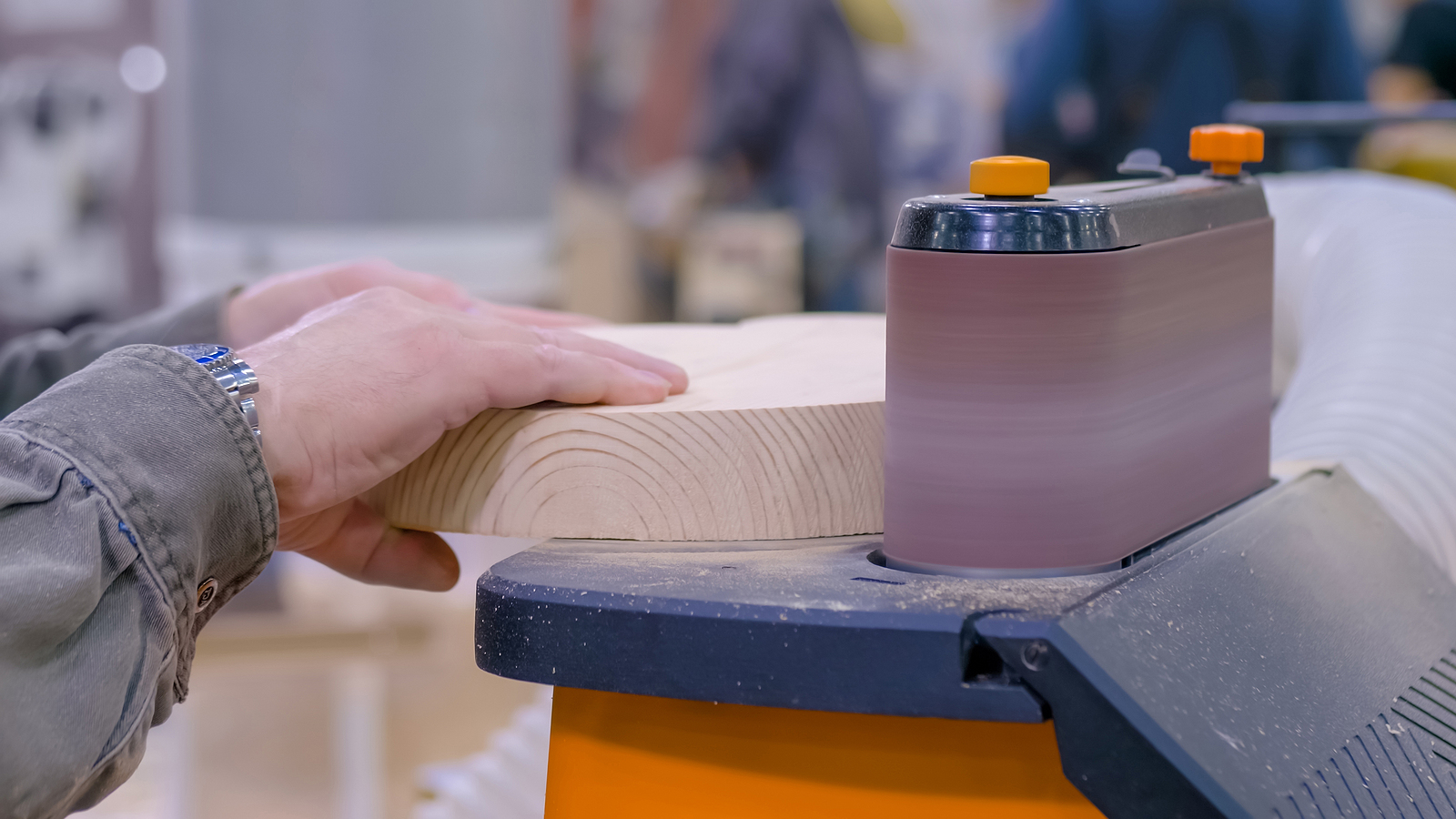Posted by Sandpaper America on Nov 9th 2021
Safety Tips for Oscillating Spindle Sanders
Although spindle sanders are one of the most useful and prevalent sanding tools in the woodworking industry, they can be very dangerous. For this reason, there are several important safety guidelines to follow when operating such a serious tool. One wrong move can put you in the emergency room, or worse, render you an amputee.
Continue reading to learn some vital safety rules for using an oscillated spindle sander, and better protect yourself from injury.

What You Need to Know About Spindle Sanders
Spindle sanders, also called oscillating spindle sanders, are great pieces of equipment for woodworking projects like furniture building and more. Sanding curves and straightening edges are all the perfect job for spindle sanders. And much like the random orbit sander, oscillating spindle sanders are perfect for smoothing out flat surfaces too.
They have a tabletop surface with a hole in the middle that houses a protruding sanding drum. This drum “oscillates”, or moves up and down, as well as around and around. This avoids uneven abrasive action and sand marks in surfaces. It’s fitted with a sandpaper sleeve that provides the actual abrasive action used to sand down wood and other materials, and ranges in retail price from 140 dollars to 300 dollars.
BEFORE YOU TURN ON THE SANDER
Wear safety gear, including goggles and gloves.
Do not wear dangling garments like neckties and necklaces. Tie back long hair. Roll up sleeves past the elbow. Tuck in shirt.
Turn on the duct collector.
Check the table and make necessary adjustments.
Check that there is no residual debris between the spindle and the table, as well as, between the spindle and the dust collection chute.
Be sure the dust collection chute and stock are NOT touching the spindle.
AFTER YOU TURN ON THE SANDER
Wait for the sander to reach full-speed before sanding your stock.
Always keep fingers one inch from spindle at all times.
Sand with light pressure, from right to left, or counterclockwise. Do not force the stock into the spindle-gently assist it there.
Do not let your stock get caught between the spindle and the table opening.
Always keep your stock on the table when sanding.
Do not sand small pieces with a spindle sander. (Use a drill press sleeve instead)
If something gets caught in the spindle: ALWAYS TURN THE SANDER OFF FIRST AND WAIT FOR IT TO STOP COMPLETELY--THEN FIX THE JAM.
Always hold onto your stock when sanding. You can lose control of your stock if you don’t hold onto it at all times.
Never leave the work area until the sander is shut off and has come to a complete stop.
NUMBER ONE TIP: Use high-quality sanding tools and sandpaper products for the best results!
Are you ready to get your woodworking and carpentry toolbox equipped for the Fall and Winter season? Call Sandpaper America at 1-800-860-SAND to buy high-quality and competitively-priced sandpaper products, today. We have a full inventory of abrasives and sanding products at the lowest prices, for both bulk and individual orders. Order online for fast and convenient shopping or call our friendly representatives to place an order over the phone.
Related Posts:
Why
Use an Oscillated Spindle Sander for Rounded Wood
Why
Use a Drum Sander for Wood Floor Sanding
A
Closer Look at Your Average Scroll Saw


